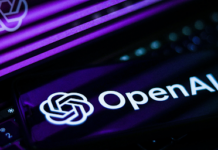In the recent few years, we have made a significant stride in the advancement of machine learning. From a time when AI & ML was isolated to the walls of universities & research centers to the time where every company is looking to implement this technology, by far, we have come a long way. We have already discussed all the important aspects of machine learning previously & also discussed some of the recent trends of artificial intelligence. Today, we will be going to discuss more about auto-machine learning.
I mean we already know that machine learning is used for automating the complex process of problem-solving but what if machine learning itself can be automated? Isn’t it cool! In this article, we will cover various questions revolving around auto-machine learning benefits, drawbacks, applications, tools & others.
Automated Machine Learning!!
Auto machine learning is basically a fundamental shift that you can observe in the approach of machine learning & data science. The concept was derived mainly because of the fact that applying traditional machine learning methods to real-world solutions is time consuming & often challenging even for the experts. It requires vast knowledge, skill, experience & professionals or experts from different disciplines.
Here, auto ml comes in the picture that promises to change everything by making easy for the experts to build & implement machine learning models in the real-world. It does so by running systematic processes on raw data & selecting models as per the relevant information of the data. It is often called the signal in the noise. The concept of auto ml makes data science more accessible to everyone by incorporating best practices of machine learning from top data scientists all over the world.
In the traditional process of machine learning, automation comes only during model training, whereas, auto-machine learning is capable of automatically execute all the manual, tedious modeling tasks of data scientists. Original machine learning methods can take weeks or even month but with auto-machine learning, you can do any tasks like developing or comparing between models, making predictions from the insights, finding any pattern or solving any business problems within days.
As of now, for many of you, it may sound simple but actually, it’s not. Because nobody has ever automated all the tasks meaning that even with automated machine learning, some expertise is still required for exploring the data & building the right solutions.
Today, there are several companies like Google & others promising to automate machine learning, but it is hard to beat the skills possessed by any data scientists. People seeking for auto ml must know all the things that they want to automate and not automate.
Indeed, automating various tasks will lighten the burden of an expert but you cannot automate all their tasks. In the end, anyhow you will depend upon the expert.
So, what exactly is auto-machine learning?
 In regular machine learning-based models, data pre-processing, feature engineering, feature extraction & feature selection is required to select the best algorithm. After this, all the parameters are fine-tuned for acquiring the best results. When it comes to auto ml, it automates all these processes. We will be going to discuss all the processes in the latter part of this blog.
In regular machine learning-based models, data pre-processing, feature engineering, feature extraction & feature selection is required to select the best algorithm. After this, all the parameters are fine-tuned for acquiring the best results. When it comes to auto ml, it automates all these processes. We will be going to discuss all the processes in the latter part of this blog.
What are the benefits of auto ml?
It makes it easy for you to use machine learning models as in normal cases; you are required to have specific sets of computer skills, mathematical expertise & domain expertise which is not that easy. Moreover, auto-machine learning can reduce the errors & bias that may occur because of a human who is designing the machine learning models in the first place. It also reduces the cost to an organization by avoiding the hiring of several experts as auto ml can be applied directly to the data pipeline. This concept can save a huge amount of time that is generally required to develop or test any machine learning model.
What about the drawbacks?
With auto ml, it is important to take caution while using it for the real-world solutions as it is relatively new & some of these technologies are still being developed. It can also take time to run on different systems. For instance, some may run well on local systems, but some require Google Colab or any other accelerated solution. Apart from this, no matter to what extent, you automate machine learning, in the end, you have to depend on the expert for critical issues.
What are the different Auto machine learning concepts?
As of now, there are two major concepts you should know when it comes to auto-machine learning. These two are neural architecture search & transfer learning.
Neural Architecture Search
It is a process that can automate the design of neural networks as per the requirement. For designing these networks, we usually require evolutionary algorithms or reinforcement learning. In reinforcement learning model strives to obtain higher accuracies because they get rewarded for success and are punished for failure. Already numerous research papers have been published on Efficient Neural Architecture Search (ENAS), Regularized Evolution for Image Classifier Architecture Search, and Learning Transferable Architectures for Scalable Image Recognition, and other concepts.
Transfer Learning
In this concept, as the name suggests, a pre-trained model is used to transfer its knowledge to the new model with a similar dataset. This results in less power & computation time and gives high accuracies. It is the best option for any machine learning model having similar datasets to the one used for pre-trained models.
What is the importance of automated machine learning?
Auto machine learning allows any organization or company to use machine learning solutions without expending extra time and money for finding all the experts with a better return on investment.
Businesses from all industries i.e. healthcare retail, finance, banking, marketing, sports, transportation & others regardless of their size can use artificial intelligence & machine learning with ease.
With auto ml, data scientists can now focus more on complex problems instead of cleaning the data, training the models or any other tasks.
What are the things that we can automate with automated machine learning?
 In machine learning & data science, experts are required to tune the algorithms. To achieve the right goal, you are required to tune several parameters just like your favorite recipe requiring different ingredients in the right proportions. An expert job is to fine-tune all the parameters regularly to find the desired results. Auto ml can automate most of the tasks, and some are as follows:
In machine learning & data science, experts are required to tune the algorithms. To achieve the right goal, you are required to tune several parameters just like your favorite recipe requiring different ingredients in the right proportions. An expert job is to fine-tune all the parameters regularly to find the desired results. Auto ml can automate most of the tasks, and some are as follows:
Hyperparameter Optimization
It is one of the very crucial aspects of machine learning where an expert is required to perform a hyperparameter search to achieve the right combinations in the algorithms. With auto ml, this whole process can be automated.
Several libraries like Eclipse Arbiter, Google TensorFlow’s Vizier or open-source Python library Spearmint allow automating hyperparameter optimization. You can even find the right combination of hyperparameters with various search algorithms such as random search, Bayesian methods or grid search.
Model Selection
For selecting the right model, an expert runs the same data through different algorithms having different hyperparameters. It helps to determine which algorithm is the best for your dataset. Auto ml automates this whole process of model selection.
Feature Selection
With the pre-determined domain of inputs, some tools help to automate the whole process of selecting the most relevant features of the domain.
Pre-Trained Models
Initially, machine learning models are dumb and with time they learn & get trained with the right data to find the pattern. The training involves models to make guesses, finding the error and then on the basis of that correcting their guesses for making more precise predictions. In some cases, a model can be trained with any set of data and can make the right predictions on the different sets of similar data.
For instance, if you can train a model based on celebrity faces, it will learn about humans’ faces & with just extra training, you can use that same model to predict the faces of your friends & family whom it has never seen before. This is called a pre-trained model that is one of the applications of auto-ml that can save anyone all the extra time & money that might have been used for training a new model.
These types of models are very useful for Computer Vision applications. Some of the well-known pre-trained models available are LeNet, VGG16, YOLO, AlexNet & Inception.
Well known tools for auto-machine learning
 Some of the popular tools that make auto ml effortless are discussed below.
Some of the popular tools that make auto ml effortless are discussed below.
-
Auto-Keras
It is a widely used library that is used for auto-machine learning. Auto-Keras is also open-source & free to use a library that was developed by DATA Lab at Texas A&M University along with other community contributors. This library is known for providing functions that allow you to automatically search the hyperparameters & architectures for deep learning models.
-
H20AutoML
It is a distributed in-memory machine learning platform that is known for scalability. It is again an open-source tool that is packed with automated machine learning modules. It can automate whole machine learning workflow including the tuning of different models and automatic training within a defined time limit. H2O.ai can also completely automate some of the most productive and challenging tasks of data science such as model ensembling, feature engineering, model tuning & model deployment.
-
SMAC
Sequential Model-Based Algorithm Configuration also called SMAC is a versatile AutoML tool that is used for optimizing algorithm parameters. It is highly effective for the hyperparameter optimization of algorithms related to machine learning.
-
Auto-Sklearn
Auto-sklearn is built around scikit-learn library for machine learning and provides out of the box supervised machine learning solutions. It is capable of searching the best algorithms for any data set and then can optimize the hyperparameters.
-
Amazon Lex
This tool can enable you to build applications such as lifelike conversational interactions & highly engaging user experiences. It can provide the functionalities of advanced deep learning like speech to text conversion or automatic speech recognition or natural language understanding. Amazon Alexa is also built around Amazon Lex with which all the developers can easily and quickly build natural language, sophisticated & conversational bots.
-
Auto-WEKA
It is a tool that is capable of simultaneously choosing the right algorithm for a data set and can set its hyperparameters by using a fully automated approach. It leverages all the latest innovations made in Bayesian optimization. Auto-WEKA assists non-experts to identify algorithms related to machine learning & set its hyperparameters as per the applications more effectively.
-
Auto-Pytorch
This tool can automate your process of selecting the right architecture & setting up the hyperparameters. It uses Bayesian Optimization or BOHB & multi-fidelity optimization for searching the right settings for your application.
-
ROBO
It is a Robust Bayesian Optimization framework or ROBO for short. It is written in Python and allows you to add or exchange Bayesian components optimizations like different regression models or acquisition functions with ease. It comes with various regression models like Random Forests, Bayesian Neural Networks or Gaussian Processes along with different acquisition functions such as the probability of improvement, expected improvement, information gain and lower confidence.
-
Auto Folio
This tool is known for its usage of algorithm configuration that can optimize the performance of algorithm selection systems. It does so by determining the best selection approach and all the hyperparameters.
-
Flex Folio
Flex Folio is an open solver and modular architecture that can integrate with several algorithm selection approaches and techniques based on the portfolio. It is also packed with a unique framework that can combine and compare existing portfolio-based algorithm techniques and selection approaches in a unified and single framework.









